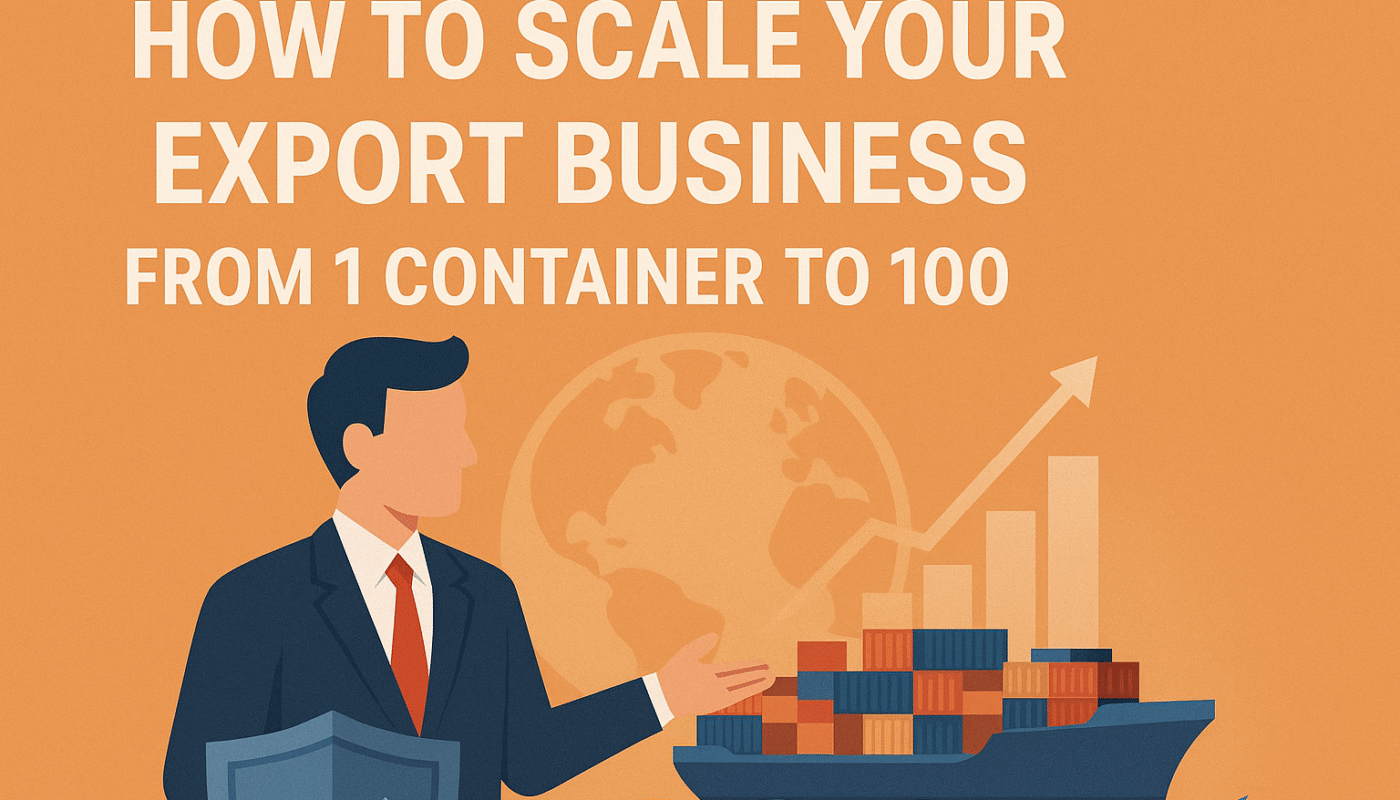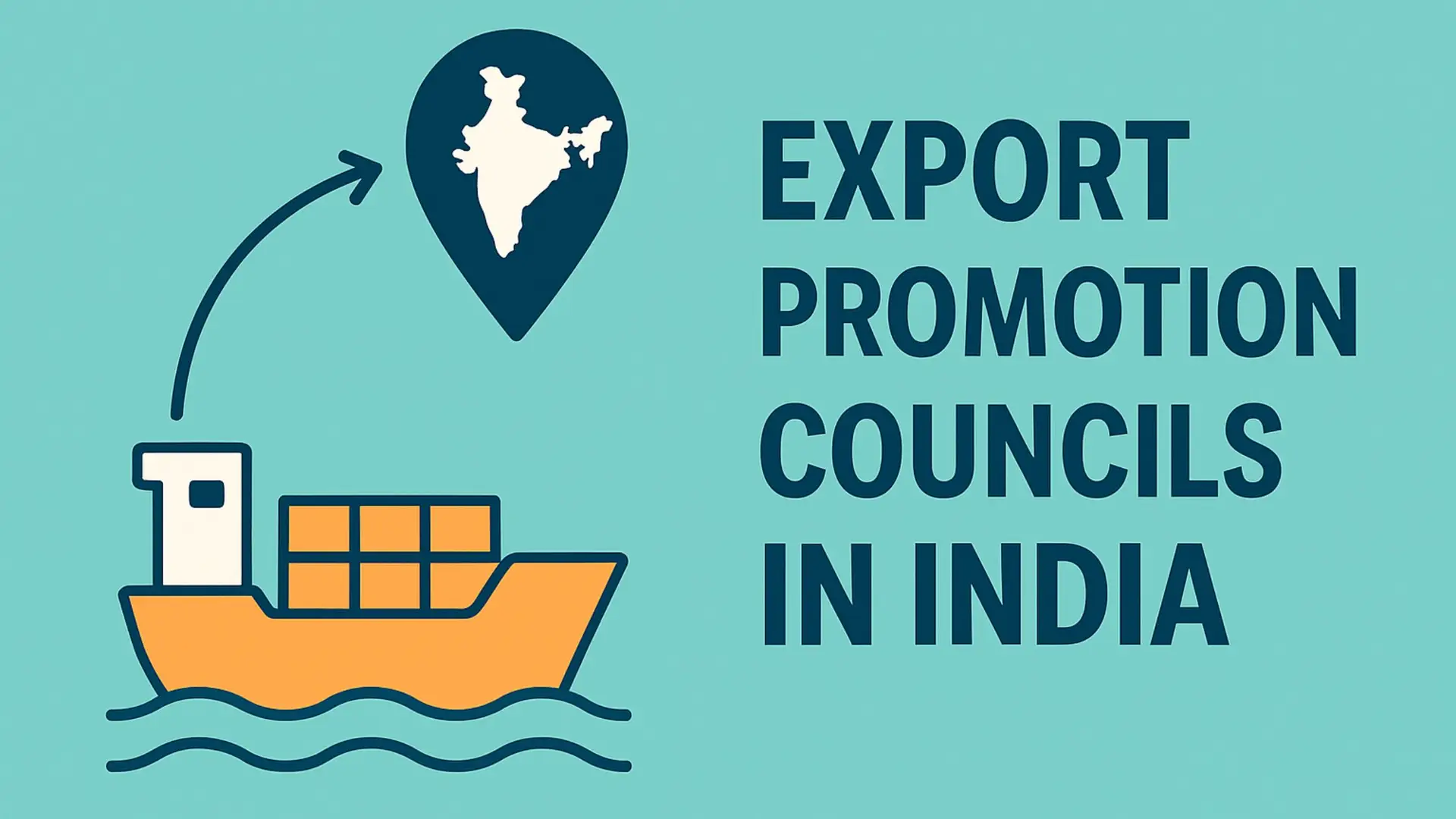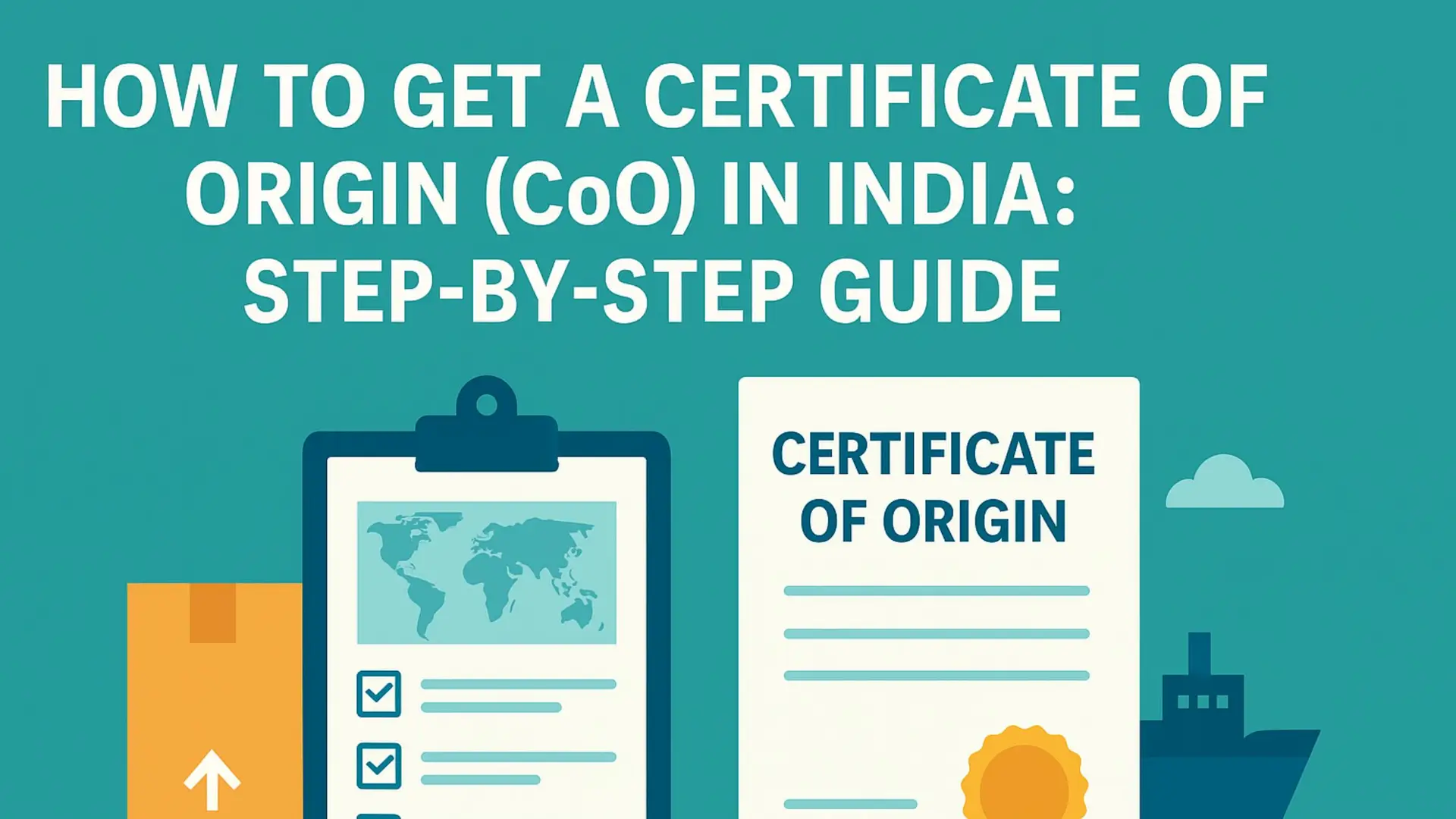- 🚀 Why Scaling Matters in Export
- ✅ Step-by-Step Plan to Scale from 1 to 100 Containers
- 🔹 Step 1: Build a Reliable Supply Chain
- 🔹 Step 2: Identify High-Demand, Repeatable Products
- 🔹 Step 3: Expand Your Buyer Network
- 🔹 Step 4: Set Scalable Pricing & Incoterms
- 🔹 Step 5: Strengthen Logistics & Freight Partnerships
- 🔹 Step 6: Secure Trade Finance & Working Capital
- 🔹 Step 7: Hire & Train Your Export Team
- 🔹 Step 8: Invest in Digital Infrastructure
- 🔹 Step 9: Build Long-Term Buyer Retention Strategy
- 🔹 Step 10: Monitor KPIs & Optimize
- 📈 Realistic Growth Timeline (Example)
- 🧠 Final Thoughts
Step-by-Step Growth Plan for Indian Exporters (2025 Edition)
Successfully shipping your first container is a big milestone. But the true challenge — and opportunity — lies in scaling your export business from one container to a hundred and beyond.
In this complete guide, we’ll walk you through the key strategies, systems, and mindsets needed to multiply your shipments, grow your global reach, and build a long-term, profitable export business.
🚀 Why Scaling Matters in Export
- 💰 Bigger volumes = better margins (lower per-unit costs)
- 📦 More buyers = diversified risk
- 🌍 Stronger brand = repeat orders
- 🔁 Efficient systems = consistent growth
But scaling from 1 to 100 containers doesn’t happen by accident. It requires a clear roadmap.
✅ Step-by-Step Plan to Scale from 1 to 100 Containers
🔹 Step 1: Build a Reliable Supply Chain
Your scaling journey begins at the source.
- Secure long-term contracts with raw material suppliers
- Build a strong relationship with processing units or manufacturers
- Keep a backup vendor list in case of emergencies
- Set quality control processes early (especially for food/agro/FMCG)
Pro Tip: Introduce automation in packaging, grading, and loading for consistency.
🔹 Step 2: Identify High-Demand, Repeatable Products
Choose products that:
- Are in consistent global demand
- Have repeat purchase potential (e.g., rice, textiles, FMCG, auto parts)
- Can be standardized for bulk export
- Allow for MOQ scaling
Use tools: Google Trends, ITC Trade Map, Export Genius
🔹 Step 3: Expand Your Buyer Network
Going from 1 container to 100 requires dozens of reliable buyers.
✅ Key strategies:
- Attend international trade shows (or virtual expos)
- List on multiple B2B platforms: Alibaba, ExportHub, IndiaMART, EC21
- Use LinkedIn to connect with procurement managers
- Get listed with EPCs (APEDA, FIEO, EEPC, etc.)
- Run targeted email campaigns by region (Africa, Middle East, etc.)
🔹 Step 4: Set Scalable Pricing & Incoterms
- Offer FOB, CIF, and DDP options to different buyer profiles
- Build margin buffers to cover currency fluctuation, freight hikes
- Introduce tiered pricing: better rates for volume or long-term deals
Tip: Set container-wise pricing and standard packing specs for efficiency.
🔹 Step 5: Strengthen Logistics & Freight Partnerships
Scaling requires you to lock in:
- Freight forwarders with priority booking
- Customs House Agents (CHA) who know your product
- Warehousing partners near port (for JIT shipping)
- Container tracking systems for real-time updates
Negotiate better freight rates by:
- Grouping orders
- Using fixed schedule shipping
- Committing volume to shipping lines
🔹 Step 6: Secure Trade Finance & Working Capital
You can’t scale without money.
✅ Options to explore:
- Pre-shipment & post-shipment finance from banks
- Packing Credit against confirmed export orders
- LC discounting or factoring services
- Apply for ECGC insurance to protect against buyer default
Pro Tip: Plan cash flow for at least 3 months ahead during scale-up phase.
🔹 Step 7: Hire & Train Your Export Team
Scaling means delegation.
- Hire or train for roles like:
- Export documentation
- Logistics coordinator
- Digital marketing/B2B lead generation
- Account manager for buyers
- Create SOPs for each step: inquiry → quote → documentation → shipping
🔹 Step 8: Invest in Digital Infrastructure
- Launch or upgrade your export-focused website
- Integrate WhatsApp Business, Zoho CRM, and tracking tools
- Use tools like Trello, ClickUp, or Notion for team coordination
- Automate repetitive tasks (invoice generation, buyer updates, etc.)
🔹 Step 9: Build Long-Term Buyer Retention Strategy
- Offer consistent quality and packaging
- Send shipment photos before loading
- Provide real-time updates & estimated delivery
- Send new offers or sample launches regularly
- Reward repeat buyers with special pricing
🔹 Step 10: Monitor KPIs & Optimize
Track these key metrics:
- No. of containers shipped per month
- Gross margin per container
- Avg. payment cycle per buyer
- Reorder rate
- Freight cost vs. forecast
Use the data to:
- Drop unprofitable buyers
- Focus on high-margin routes
- Optimize product mix
📈 Realistic Growth Timeline (Example)
| Phase | Target | Timeline |
|---|---|---|
| Phase 1 | 1–5 containers/month | Month 1–6 |
| Phase 2 | 10–15 containers | Month 6–12 |
| Phase 3 | 25+ containers | Year 2 onwards |
| Phase 4 | 100+ containers/year | Year 3 onward |
🧠 Final Thoughts
Scaling from 1 to 100 containers isn’t about luck — it’s about planning, systems, and relationships. Focus on repeat buyers, operational efficiency, and sustainable cash flow. Once you have the engine built, growth becomes inevitable.
At StartExportIndia.com, we help beginner exporters become global suppliers — one container at a time.



